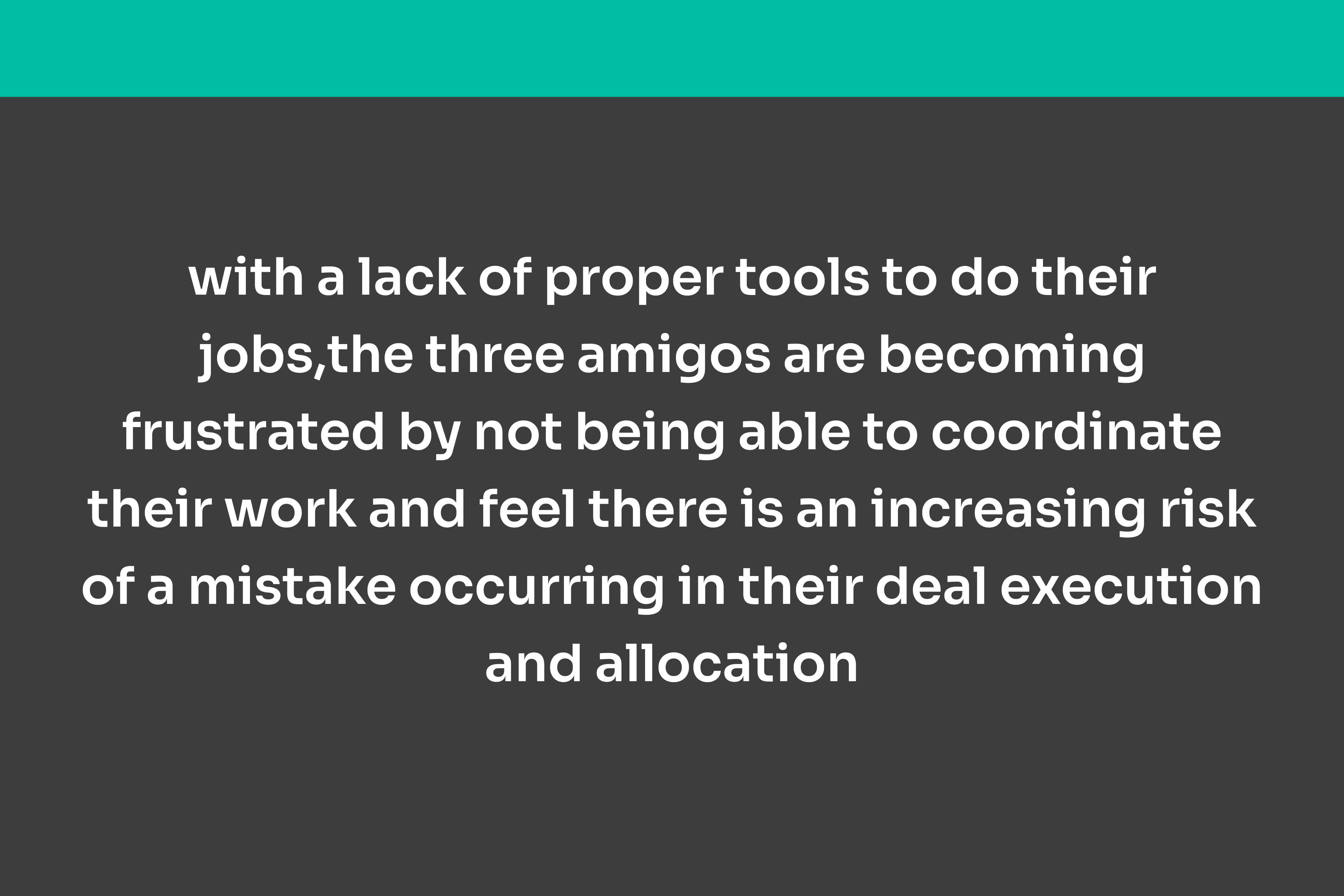Get our report on investing trends!
By providing your email, you will shortly receive the latest report from Pepper.

For any private credit manager, the strength of the investment team is always going to be the firm’s most important resource. It’s an investment you make to add alpha, manage risk, and grow your AUM. Unfortunately, for many firms, a lack of proper tools hinders the performance of those entrusted with making crucial investment performance and portfolio management decisions.
In this article, we look at three private credit investment team members and how disparate applications, fragmented data, and a lack of collaborative tools are challenging the investment process and affecting the funds being managed.
Al, Dee, and Qui are part of the investment team at a $10 billion private credit manager. They are collectively referred to as the three amigos as they work closely together to ensure the deal identification, structure, and implementation process is executed appropriately, on time, and within numerous guidelines.

The manager oversees several commingled funds, separate accounts, a private BDC, and a CLO fund, all at various vintage years, leverage parameters, and investor reporting requirements. They are planning to raise their next fund in the next six months targeting $5 billion. The firm, across all accounts, has done over 800 deals and has close to over 600 active positions.
Al, Dee, and Qui have distinct roles and responsibilities inside the firm:
All three must work closely together (and across the organization) to ensure all the portfolios run at peak performance and risk/return profiles are optimized.
The credit firm Al, Dee, and Qui work for is growing considerably. On top of capacity in its current funds and accounts, the firm wants to expand its AUM by 50% in the next six months with a new fundraise. The investment team has been targeting more complex, bigger deals, potentially increasing the portfolios’ upside but also increasing the breadth and depth of deals to be monitored and managed. With a new fund being raised, the firm needs to scale its investment platform or face an uptick in both operational and investment risk.

The three amigos use various programs to carry out their assigned responsibilities. This creates workflow challenges in how the team collectively manages the multiple investment vehicles and portfolios overall. The firm has tried to connect these disparate applications via APIs but found them unreliable, expensive, and hard to maintain. Without a central data repository, information in the various applications being used is creating redundant work, with poor visibility across all the investment vehicles. Portfolio parameters (liquidity, diversification, LP agreements, leverage) are at risk of being breached when new deals are closed because they do not have proper visibility across all the funds and accounts.
At the same time, senior management has asked for more insights into the risks across the portfolios, given the breadth and speed of new deals being finalized. This has forced the team to download data from each application and manually consolidate the information for reporting purposes.
Additionally, the costs of subscribing to multiple applications and APIs have proven to be a poor ROI on invested technology – not to mention the hidden costs of having to manage various data silos and the work needed to learn, maintain and support all the applications being used.
With a lack of proper tools to do their jobs, the three amigos are becoming frustrated by not being able to coordinate their work and feel there is an increasing risk of a mistake occurring in their deal execution and allocation decisions. Al, Dee, and Qui have begun to question the firm’s commitment to sound practices, increasing not only investment and operational risk but also personnel risk.
To address these challenges, the firm undertook a comprehensive review of its infrastructure, reporting needs, security, and application stack to develop a comprehensive assessment of its technology needs to support the deal and investment team. In conferring with Al, Dee, and Qui (and the larger credit investment team), it was determined that a new platform would have to support a number of features and attributes, including:
With deal competition only increasing and greater scrutiny being applied by investors and regulators, there is little room for error in maximizing the efficiency of private credit investing. Upgrading a credit investment platform is a process not to be taken lightly, particularly with so many legacy technology software companies offering outdated solutions, ultimately creating more problems than you started with.
Key personnel like Al, Dee, and Qui can maximize their investment, allocation, and liquidity analysis efforts by embracing a modern, tech forward mindset in deal management and portfolio optimization.
Are you interested in seeing how your three amigos can benefit from a modern, unified private credit management platform? Learn more here.
Sign up for our newsletter to receive biweekly updates on the world of asset management, delivered straight to your inbox.

By providing your email, you will shortly receive the latest report from Pepper.
Enter your information below to schedule a demo with us